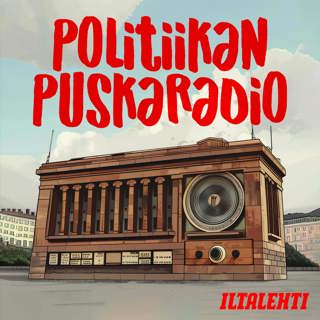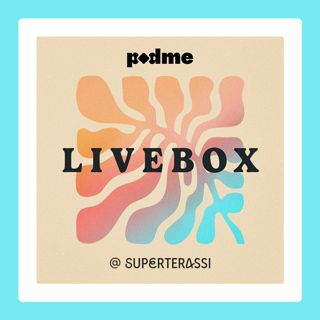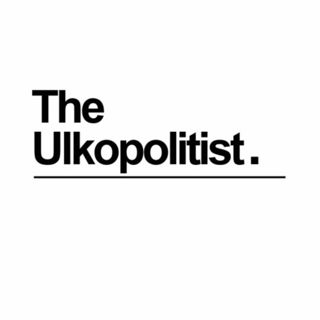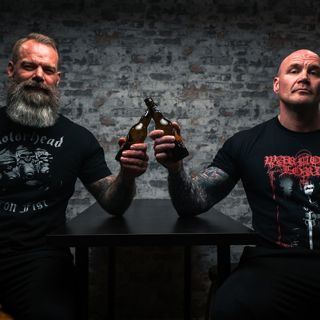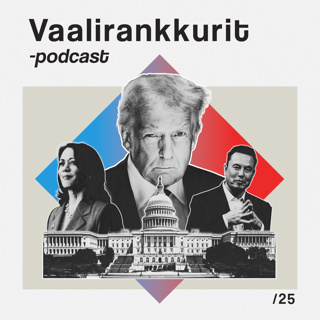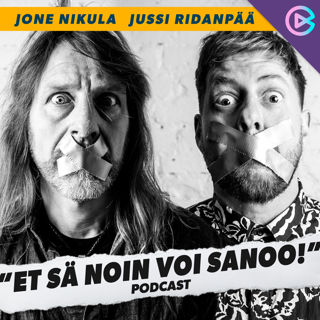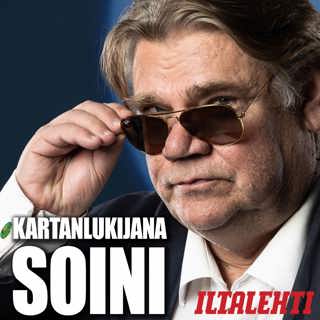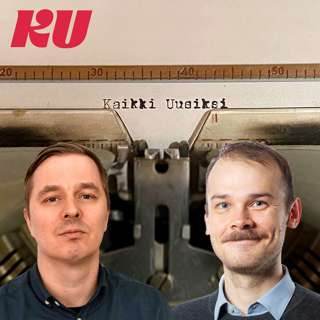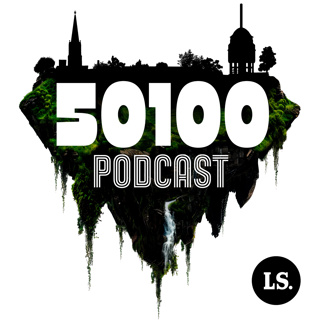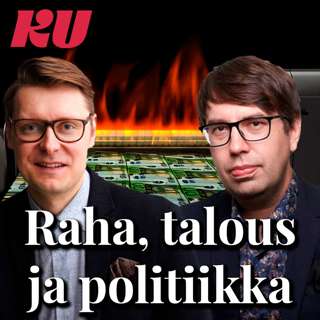
Fashion Industry Update: Prada Acquires Versace, Brands Target Silver Generation, and Sustainability Innovations
Fashion Industry Update: May 2025 State of AnalysisThe fashion industry continues to experience significant shifts in early May 2025, with major leadership changes and corporate acquisitions making headlines. In the past 48 hours, the industry has been processing the recent appointment of Jonathan Anderson as the new creative director of menswear at Dior, marking another move in what industry insiders are calling a game of "creative director musical chairs"[1].Perhaps the most substantial recent development is Prada's acquisition of Versace for €1.25 billion, a move that signals major consolidation among luxury fashion houses[1]. This acquisition represents one of the most significant deals in the fashion sector this year.On the collaboration front, Christian Louboutin has announced a new partnership, while Mulberry has launched a campaign celebrating British craftsmanship[1]. These initiatives highlight the industry's continued focus on heritage and craftsmanship as selling points.Market analysts note that brands are increasingly targeting the "silver generation" of consumers over 50, a demographic previously overlooked despite their growing spending power[2]. This shift represents a strategic pivot as younger consumer markets become increasingly saturated.In the sportswear category, incumbent brands face mounting pressure from smaller, more innovative "challenger" brands that are rapidly capturing market share[2]. This trend underscores the advantage of agility in today's market.Sustainability remains a key focus, with several zero waste initiatives gaining traction. The digital tool "Waste Insight" has been developed to help design teams optimize fabric usage through advanced algorithms[3]. Additionally, registration is open for the 2025 Online Zero Waste Masterclass scheduled for August 8th[3].Street fashion in Milan shows vibrant summer trends with temperatures at 25°C, indicating strong consumer engagement with seasonal offerings[4].As economic uncertainties persist, fashion executives must navigate complex market dynamics while pursuing sustainable practices and targeting diverse consumer segments to find pockets of growth in challenging conditions.This content was created in partnership and with the help of Artificial Intelligence AI
8 Touko 2min

Fashion's Bold Moves, Shifting Trends: Luxury Acquisitions, Collaborations, and Evolving Consumer Behavior
In the past 48 hours, the fashion industry has experienced a remarkable mix of bold moves, new partnerships, and ongoing market adaptation. The headline news is Prada’s acquisition of Versace for 1.25 billion euros, a deal that cements the luxury conglomerate trend and signals ongoing consolidation among major players. This acquisition is expected to reshape the competitive landscape, with Prada gaining access to Versace’s strong global brand and youthful following. Meanwhile, creative leadership continues to shift, with Jonathan Anderson announced as the new creative director of Dior menswear, reflecting the industry’s ongoing search for fresh perspectives and creative innovation.On the collaboration front, Christian Louboutin’s new project and Mulberry’s campaign celebrating British craftsmanship are examples of brands seeking differentiated consumer engagement through storytelling and unique product drops. These strategic shifts come as midyear market momentum remains muted, with the industry facing slower sales growth compared to previous years.Consumer behavior is also evolving. While younger shoppers remain important, brands are now courting the growing over-50 consumer cohort, whose spending power and style influence are rising. Challenger brands, especially in sportswear, are rapidly capturing market share from established names by focusing on innovation and direct customer connection.Supply chain flexibility remains a top priority. Ongoing global trade shifts are prompting retailers to emphasize nearshoring and more agile manufacturing. Recent weeks have seen increased investment in technology to manage inventory and reduce both excess and shortfalls. At the same time, climate concerns and regulatory pressure to reduce emissions and waste continue to drive advances in sustainable practices, even though consumers are not always willing to pay extra for eco-friendly products.Highlighting cultural leadership, the 2025 Met Gala and accompanying Costume Institute exhibit are sparking historical conversations and shaping trends by spotlighting 250 years of Black men’s fashion. This focus signals how major events continue to steer dialogue and influence design directions industry-wide.Altogether, compared to last year’s fragile optimism, the current mood is characterized by strategic consolidation, heightened competition, and cautious investment, as leaders rethink approaches in a complex, fast-changing environment. This dynamic will likely persist as brands and retailers balance short-term pressures with the need for long-term innovation and cultural relevance.This content was created in partnership and with the help of Artificial Intelligence AI
7 Touko 2min

Fashion Industry Navigates Sustainability Challenges and Demographic Shifts in 2025
Fashion Industry Current State Analysis: May 2025The fashion industry continues to navigate complex market dynamics in early May 2025. Sustainability remains a central focus, with recent legal challenges highlighting accountability. A German court just ruled against Adidas, banning their "climate neutral by 2030" advertising claims due to ambiguity and lack of transparency regarding carbon offset usage.Consumer behavior trends show promising developments for secondhand markets. Vinted reported a 36% revenue increase in 2024, reflecting European consumers' growing interest in resale platforms as cost-saving measures. Additionally, product refill sales increased 20% in Q1 2025 compared to 2024, representing a quadrupling of sales since tracking began.Major brands are expanding their global presence through exhibitions and collaborations. Dior's "Designer of Dreams" exhibition opened in Seoul at Dongdaemun Design Plaza, running from April 19 to July 13, showcasing the brand's evolution from the 1947 "New Look" to contemporary designs. Christian Louboutin launched a vibrant collaboration with artist Otis Carey.Demographic targeting is shifting as brands recognize the growing importance of older consumers. Industry analysts note that the "silver generation" of shoppers over 50 represents an increasingly valuable market segment for 2025, contrasting with the historical focus on younger demographics.Supply chain reconfiguration continues with companies accelerating nearshoring efforts and prioritizing manufacturing in geopolitically aligned countries. These adjustments aim to reduce inventory challenges while addressing margin pressures and sustainability requirements.Despite economic uncertainties, innovative "challenger" brands are capturing market share from established players, particularly in sportswear categories, by demonstrating greater adaptability to changing market conditions.The fashion landscape in May 2025 reflects an industry balancing immediate economic pressures with longer-term sustainability commitments, while adapting to evolving consumer preferences across different demographic segments.This content was created in partnership and with the help of Artificial Intelligence AI
6 Touko 2min

Fashion's Resilience: Navigating Headwinds and Sparking Innovation in Uncertain Times
In the past 48 hours, the global fashion industry continues to face significant headwinds but also sees sparks of innovation. The latest BoF and McKinsey survey of 345 fashion executives reveals deep industry pessimism, with 39 percent expecting conditions to worsen in 2025, and only 20 percent seeing potential improvement. This sentiment continues a trend from previous years, with pessimism now becoming the norm amid shifting consumer habits and unpredictable macroeconomic conditions.Supply chain instability remains a persistent challenge. Labor shortages, fluctuating raw material costs, and ongoing logistics disruptions are pressuring brands at multiple stages of production and distribution. These issues are prompting some companies to overhaul sourcing strategies and invest in automation and digital supply chain tracking. Notably, brands that move quickly to adapt are finding openings, especially in niche markets or by leveraging e-commerce innovations.Despite obstacles, innovation is vibrant. This week, the Global Fashion Agenda and PDS Ventures named nine startups to the Trailblazer Programme 2025 shortlist, highlighting solutions in circular materials, sustainable manufacturing, and digital fashion. Such developments demonstrate how the industry is responding to sustainability and efficiency demands, as both investors and consumers push for responsible alternatives.On the consumer side, behavior continues to shift toward conscious shopping and value-seeking. High inflation and stagnant wage growth are driving more shoppers to delay purchases or favor discounted and secondhand apparel. Industry leaders like Zara and H&M have responded by expanding their pre-owned and recycled product lines, while luxury brands are increasing collaborations with resale platforms to capture shifting demand.No major regulatory changes have been recorded this week, but ongoing European Union discussions about stricter environmental standards are raising the stakes for global brands, encouraging early compliance efforts and improved transparency.Overall, while the mood in the sector remains cautious compared to the optimism of the post-pandemic rebound, the current environment is marked by a race to innovate, astute cost management, and a push toward sustainability. Compared to last year, executive anxiety is higher, but so is the drive to find competitive advantages through partnership, technology, and a more responsible approach to fashion.This content was created in partnership and with the help of Artificial Intelligence AI
2 Touko 2min

Fashion Trends in 2025: Navigating Uncertainties and Consumer Shifts
FASHION INDUSTRY UPDATE: MAY 2025The fashion industry continues to navigate significant challenges in early May 2025, with several key developments emerging in the past 48 hours.Luxury brands are increasingly pivoting toward the often-overlooked "silver generation" of consumers over 50 years old, recognizing their growing proportion of fashion spending. This strategic shift comes as younger consumer markets show signs of saturation.Supply chain reconfiguration remains a top priority as geopolitical tensions affect global trade. Major retailers are accelerating nearshoring initiatives and prioritizing manufacturing in politically aligned countries to mitigate disruption risks. Just yesterday, several major fashion houses announced new production facilities in Mexico and Eastern Europe.Sustainability continues to dominate industry conversations. Recent data indicates 67% of consumers now consider sustainable materials an important purchasing factor. However, brands are struggling with the tension between environmental commitments and profit margins, especially as regulatory bodies intensify scrutiny of greenwashing practices.In the sportswear category, challenger brands are rapidly capturing market share from established players. These smaller, more agile companies are demonstrating superior innovation capabilities unburdened by traditional business models.Inventory management has become critical as brands work to reduce waste while avoiding shortfalls. New AI-driven forecasting technologies are being deployed across the sector to maintain optimal stock levels.The US fashion market has emerged as a surprising bright spot despite ongoing tariff uncertainties, with apparel sales showing resilience compared to other retail categories.As we move further into 2025, industry experts emphasize that success will depend on brands' ability to respond decisively to uncertainty, with Matthew Katz of SSA & Company advising companies to "invest in your strengths, understand your consumers better than ever, and act with purpose."This content was created in partnership and with the help of Artificial Intelligence AI
1 Touko 2min

Fashion's Rapid Evolve: Prada's Versace Acquisition, Collaborations, and Sustainability Shift
In the last 48 hours, the fashion industry has been defined by rapid adaptation, major deals, and a wave of new collaborations reshaping both luxury and mainstream markets. The most significant headline is Prada’s acquisition of Versace in a €1.25 billion deal finalized this month, consolidating two Italian powerhouses and marking a strategic move to fortify Prada’s position in the global luxury sphere. Dario Vitale’s appointment as Versace’s creative director following Donatella Versace’s departure signals a new creative direction, with the industry watching closely for forthcoming collections and changes in brand identity. Simultaneously, Middle West Partners’ acquisition of a majority stake in David Webb aims to accelerate growth and expand this historic jewelry house’s reach, further diversifying the luxury retail landscape over the coming year.Brand collaborations remain a central force. Louis Vuitton has reignited its partnership with artist Takashi Murakami, updating the iconic 2003 collection with bold, anime-inspired designs aimed at attracting younger luxury consumers. Balenciaga and Under Armour have merged high fashion with sports technology, reflecting a rising demand for innovative, versatile apparel. The Nike x Skims collection, debuting this spring, exemplifies the trend towards inclusive sizing and body positivity, with advanced performance fabrics tailored for comfort. The Apple x Hermès partnership continues to blend wearable tech with luxury, unveiling exclusive new Apple Watch bands that reinforce the synergy between technology and high-end fashion.On the pricing front, limited-edition collaborations have seen remarkable secondary market growth. For example, the Nike x Tiffany collection surged 195 percent in resale price, while Diesel x Savage x Fenty achieved a 97 percent jump, although with less overall market traction. These figures underscore sustained consumer appetite for exclusivity and collectible products.Sustainability and circularity also took center stage at the Change Now 2025 trade fair, where LVMH led initiatives to drive circular fashion by engaging suppliers and partners. This focus on responsible production reflects shifting consumer priorities toward eco-conscious brands and transparency.Overall, compared to previous reporting, this week’s developments highlight a greater emphasis on agility, cross-industry innovation, and adaptive strategies to navigate evolving consumer expectations, price sensitivity, and global market uncertainty. Industry leaders are responding with bold investments, inclusivity, and a greater commitment to sustainability, aiming to secure continued growth and relevance in a rapidly changing landscape.This content was created in partnership and with the help of Artificial Intelligence AI
29 Huhti 3min

Fashion Forward: Prada Acquires Versace, Sustainable Collabs, and Industry Trends
FASHION INDUSTRY UPDATE: PAST 48 HOURSIn a major industry development, Prada has officially acquired Versace for approximately AUD $2.2 billion, bringing the brand back under Italian ownership after being part of US-based Capri Holdings since 2018. Donatella Versace, who recently stepped down as creative director after nearly 30 years, will remain as chief brand ambassador while Dario Vitale becomes the first non-family member to lead the iconic fashion house[1].Sustainability continues to gain momentum with Byron Bay's St. Agni collaborating with Queensland-based Outland Denim on a capsule collection for Earth Month. The partnership showcases how purpose-driven brands can create minimalist, elevated essentials using low-impact materials[1].In product launches, Louis Vuitton is introducing the LV Sneakerina, an innovative hybrid between sneaker and ballet flat available from April 11. The new silhouette will be offered in multiple colorways including fuchsia, forest green, beige, black, white, pink, blue, and silver[2].On the luxury jewelry front, Van Cleef & Arpels has brought "The Art of Movement" exhibition to Sydney's Watersedge at Campbell's Stores, running from April 11 to May 8. The showcase features over 100 jewels from the brand's patrimonial collection alongside archival sketches[2].Current market sentiment remains cautious, with 84 percent of industry leaders expecting market conditions to decline or remain stagnant in 2023 according to the BoF-McKinsey State of Fashion survey[5].Bangladesh continues its transformation in the global fashion landscape, now positioning itself as a leader in ethical fashion production according to industry consultant Taiwo Meghoma[3].These developments reflect an industry balancing innovation and sustainability while navigating economic uncertainty, with brands focusing on distinctive products and meaningful collaborations to maintain consumer engagement.This content was created in partnership and with the help of Artificial Intelligence AI
28 Huhti 2min

Fashion Industry Navigates Volatility: Sustainable Sourcing, Supply Chain Resilience, and New Revenue Streams
In the past 48 hours, the global fashion industry has shown both resilience and adaptation as it navigates ongoing economic pressure, supply chain disruptions, and changing consumer dynamics. One of the most notable developments came from the Functional Fabric Fair Spring 2025 in Portland, which saw a 9 percent rise in attendance and a 30 percent expansion in exhibition space compared to the previous year. This growth reflects the heightened importance of strong supplier relationships and sustainable sourcing as brands look to secure reliable partners for future collections amid persistent supply chain volatility. Major players like Adidas, Patagonia, REI, and Nike were among the 320 brands seeking solutions to ensure supply chain resilience and responsible product development. Brands are increasingly prioritizing partnerships with vetted, sustainable-certified suppliers, as meeting consumer demand for both performance and environmental responsibility has become critical.On the business front, recent days have seen significant market activity. Bershka, part of the Inditex group, expanded into Sweden, marking a swift 40 day market entry that signals ongoing retailer confidence in physical store openings when justified by strategy and local demand. Meanwhile, in the United States, new tariffs on imported goods are squeezing margins for both luxury and fast fashion players, prompting many to look at the resale market as both a buffer for declining demand and a source of new revenue streams.Investor sentiment has shown volatility as well. Shares in luxury group Puig fell sharply after the company withdrew certain batches of Charlotte Tilbury setting spray, highlighting the immediacy with which product safety or recall issues can impact market value. Regulatory shifts also continue to affect brand positioning. Uniqlo and other major retailers face consumer boycotts and pressure over their sourcing practices, particularly regarding Xinjiang cotton, underscoring the critical importance of transparent, ethically sound supply chains.In summary, current market conditions reveal a fashion industry intensely focused on sustainable sourcing, supply chain stability, and new market opportunities despite external pressures. Compared to even a month ago, leading brands are doubling down on supplier partnerships, sustainable sourcing, and risk mitigation strategies. These efforts position them to better meet consistent consumer demand for both innovation and social responsibility while weathering ongoing economic uncertainty.This content was created in partnership and with the help of Artificial Intelligence AI
23 Huhti 2min





